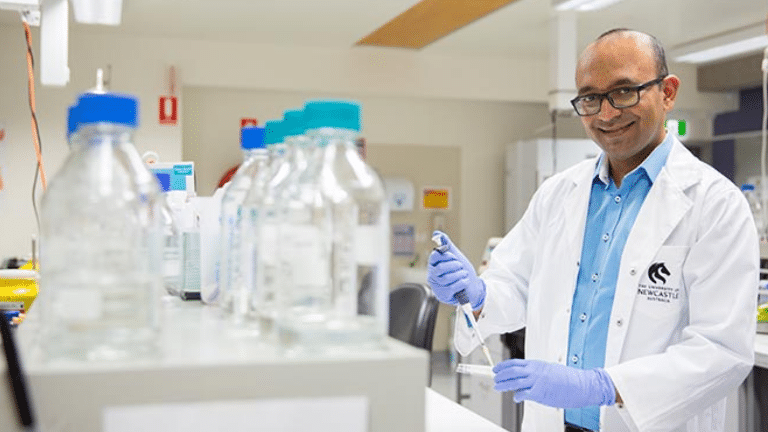
Endometriosis is a progressive, chronic, and painful condition that affects almost one in ten Australian women.

Endometriosis is a progressive, chronic, and painful condition that affects almost one in ten Australian women.
Professor Pradeep Tanwar is a National Health and Medical Research Council Fellow, and researcher at HMRI. He leads the University of Newcastle Gynecological Diseases program.
Professor Tanwar’s work has focused on understanding female reproductive tract diseases and how to treat them.
“Endometriosis is a painful, debilitating disease that affects more than 10% of Australian women and 190 million women worldwide,” he explains. “Its diagnosis can take up to five to 12 years, primarily due to the lack of a non-surgical diagnostic test.”
Currently, the diagnosis has relied on a surgical procedure (laparoscopy) followed by histopathological confirmation. However, endometriosis lesions can be tiny, especially at the early stages, and difficult to detect, which means women suffer for years before even knowing they have endometriosis.
“This is extremely difficult for teen endometriosis patients,” Professor Tanwar states “as they have to miss school and unable to participate in normal social activities due to heavy periods and excruciating pelvic pain.”
“Many women with endometriosis have to take a lot of painkillers, some even using cannabis illegally to deal with the pain. Every week in a month is hell for them.”
The symptoms of endometriosis are like those that many women have during their period bloating, pelvic and back pain, and low energy. However, depending on the severity of the endometriosis, the pain can be excruciating and extend to pain during sex, pain when defecating or urinating during period time, and difficulty in getting pregnant or experiencing infertility.

“The first question we need to solve, is to understand why some women suffer from endometriosis and others do not,” declares Professor Tanwar.
After years of intensive research and studies, in 2019 Tanwar and his team announced what they believed was the answer. The team identified a cell (genetic signal Axin2) that sparks the rapid regeneration of the womb lining after menstruation.
However, when that cell becomes dysfunctional it can cause uterine illnesses such as endometriosis, as well as endometrial cancer, and infertility.
Because the cells repair the uterus in each cycle, they are highly regenerative. But if these mutated cells expand and start to make uterine-like cells in the abdominal cavity, then you end up with endometriosis.
What Professor Tanwar found was that inhibiting the cell would stops uterine regeneration process and therefore also inhibit endometriosis.
“Identification of these possible endometriosis initiating cells allows us to identify specific disease biomarkers released by endometriotic cells in the patient’s blood,” says Professor Tanwar.
“These biomarkers would pave the way for improved imaging and blood-based diagnostic methods for this disease.”
Currently, there is no cure for endometriosis. Patients are treated to manage their symptoms so that they can live with their disease.
“We are taking a two-prong approach”, he explains “First, to develop a non-surgical detection method for this disease by focusing on biomarkers secreted by endometriotic cells. Secondly, to investigate existing drugs that can be repurposed to target endometriosis initiating cells.”
HMRI would like to acknowledge the Traditional Custodians of the land on which we work and live, the Awabakal and Worimi peoples, and pay our respects to Elders past and present. We recognise and respect their cultural heritage and beliefs and their continued connection to their land.

Hunter Medical Research Institute
We’re taking healthy further.
Locked Bag 1000
New Lambton
NSW, Australia, 2305



This site is protected by reCAPTCHA and the Google Privacy Policy and Terms of Service apply.
Copyright © 2024 Hunter Medical Research Institute | ABN: 27 081 436 919
Site by Marlin Communications
